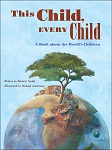Pistes d'exploration
:
Discuss the title before and after reading the book. Why is it important to talk about children’s rights? Name some of the rights that are meaningful to you.
:
Read the spread, “You have the right to live with your parents …” Do you relate more to Lucas or Mamadou? Write about your family. Why are families important?
:
The foreword states, “one by one, each child can make a difference.” What action can you, your family, your school or your community take to help children around the world?
:
What are some of the rights that Canadian children may take for granted? Create an I am thankful for … gratitude leaflet based on one of the rights in the UN Convention on the Rights of the Child.
: Compare three books on children’s rights. How are the structures and features similar and different? Do they address the same audience?
:
Choose a few topics from the book and discuss how children’s rights are protected in your community.
:
Explore newspaper articles about children around the world. Discuss which rights need to be addressed.
:
Look at different children’s books such as Goal, The Other Side, A Good Trade or One Green Apple. In pairs, discuss and identify the rights that apply in each of these situations.
:
Discuss children’s rights in light of your own situation. How would your life be different if you did not have access to one of them? Write a paragraph about how that life would be.
: Choose a few topics from the book and discuss how children’s rights are protected in your community.
: List (five) surprising facts and find a creative way to display them on the school walls.
: Create a class magazine based on the table of contents. Write about children in Québec.
Mots-clés
Non-fiction, around the world, children, children's rights, equality, everyday life, global awareness, human rights


